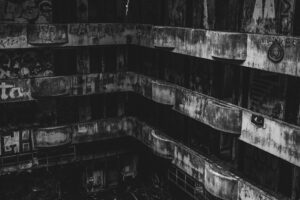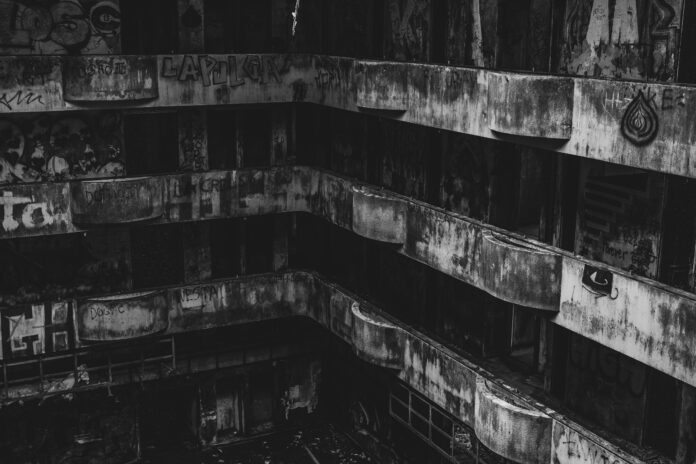In a post-apocalyptic or Armageddon-like scenario, cities would undergo drastic transformations. Buildings—once symbols of human achievement, culture, and society—would face natural decay, abandonment, and repurposing by survivors (if any). But the fate of these structures is as much about time and elements as it is about the cause of the downfall. Here’s what would happen to buildings in such a setting:
1. Structural Decay and Collapsing Infrastructure
The most immediate consequence of a sudden apocalypse would be the collapse of vital infrastructure. Without maintenance, buildings—especially those in urban areas—would start to degrade quickly.
- Structural Deterioration: Concrete structures would begin to crack and crumble. Steel and iron would rust, weakening the foundations and support beams. Wooden structures would rot, especially in damp conditions, and roofs would cave in after rain or snow accumulation.
- Utilities Fail: Without power or functioning plumbing, utilities like water, gas, and electricity would cease, leading to unsanitary conditions. Waterlogged and poorly ventilated buildings would become breeding grounds for mold, accelerating decay.
- Natural Forces: Depending on the scenario, natural disasters like earthquakes, floods, or wildfires could further damage buildings, weakening their integrity or outright destroying them.
2. Reclamation by Nature
Once humanity is no longer around to tend to their cities, nature would quickly begin to reclaim the land. This process of urban decay is called “ruinification,” where vegetation, animals, and the elements gradually take over abandoned spaces.
- Vegetation Growth: Plants like weeds, ivy, and trees would begin to infiltrate cracks and crevices, breaking apart bricks, stone, and concrete as they grow. Over time, entire buildings could be overrun by forests, with tree roots penetrating walls and foundations.
- Animal Occupation: Abandoned buildings could become shelter for animals. Rodents, insects, birds, and even larger animals like coyotes or bears may take refuge in these structures, further contributing to their degradation.
3. Uninhabited Cities Becoming Ruins
In a world where society has collapsed, buildings left untouched for extended periods will transform into desolate ruins.
- City Streets and Skyscrapers: High-rise buildings, once bustling with office workers or residents, would lose their glass windows, and their interiors would be exposed to the elements. Tall skyscrapers, if not structurally reinforced, could face catastrophic failure due to weakened foundations and unchecked deterioration.
- Public Buildings: Schools, hospitals, and government buildings would become empty husks, with their contents looted or decayed, and their materials left to break down over time.
4. Repurposing by Survivors
If survivors remain, they might use existing structures for shelter, storage, or even defense. Buildings might be repurposed in creative ways:
- Shelters: People may find temporary shelter in abandoned buildings, particularly those with solid structures like brick or stone. Some might even fortify certain buildings to protect themselves from the dangers of the new world, including marauding groups or wildlife.
- Reclamation of Resources: Survivors might scavenge the remains of buildings for building materials—wood, metal, stone, or even the plumbing and electrical wiring that can still be salvaged.
- Wartime Defense: If there is a conflict, certain fortified buildings might be used as defense structures or command centers, adapted to the changing needs of the survivors.
5. The Long-Term Effects of Neglect
Over time, as years turn to centuries and the original building materials continue to deteriorate, it’s likely that even the most formidable structures would eventually collapse.
- The Role of Weather: Extreme temperatures, storms, and the freezing and thawing of water in building materials can exacerbate the breakdown process. Concrete and brick buildings will begin to show signs of complete structural collapse, often leaving behind nothing but rubble or large, inaccessible foundations.
- Invasive Wildlife: As the world becomes more wild and less human-controlled, some buildings might be taken over by animals. The overgrowth could also lead to the creation of new ecosystems within the old structures.
6. Cultural and Historical Markers
Some buildings, especially those with historical significance or cultural value, may be preserved for much longer. But even in such cases, the relentless forces of nature will eventually leave their mark. Over centuries, those once grand and iconic structures will dissolve into the landscape, becoming little more than stories passed down by survivors or ancient remnants.
The Slow Decline of Human-Made Monuments
After an apocalypse or Armageddon, buildings will experience a range of fates. From the rapid decay of infrastructure to slow reclamation by nature, the trajectory of human-made structures in such a world speaks to both the fragility of civilization and the unstoppable force of nature. Without human hands to maintain or rebuild, even the most resilient buildings will eventually be overtaken by the natural world, leaving a haunting reminder of the past.

Views: 4






